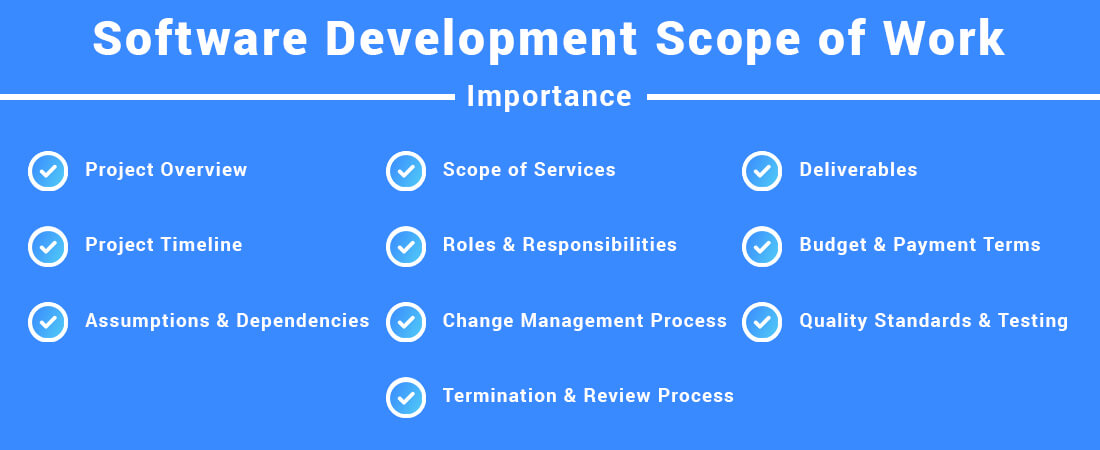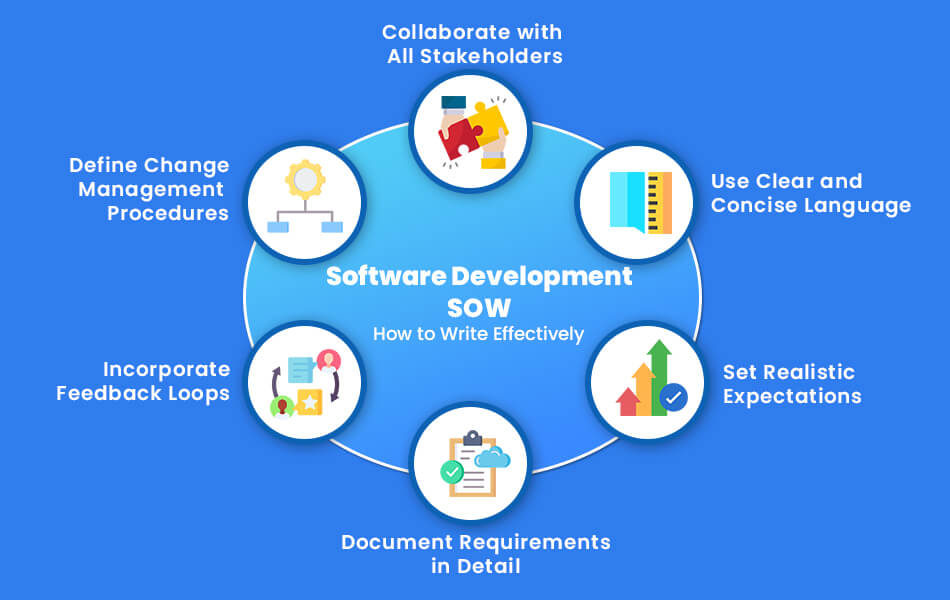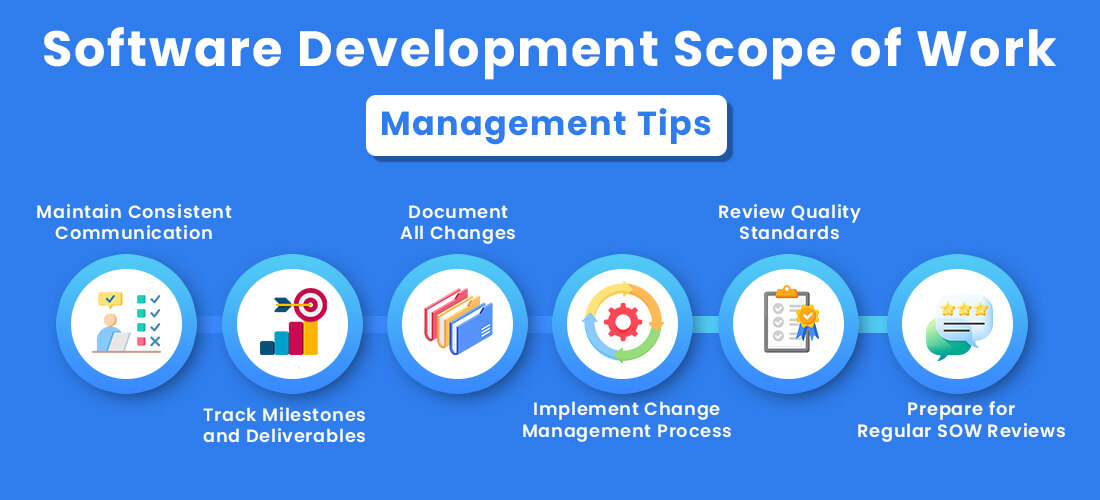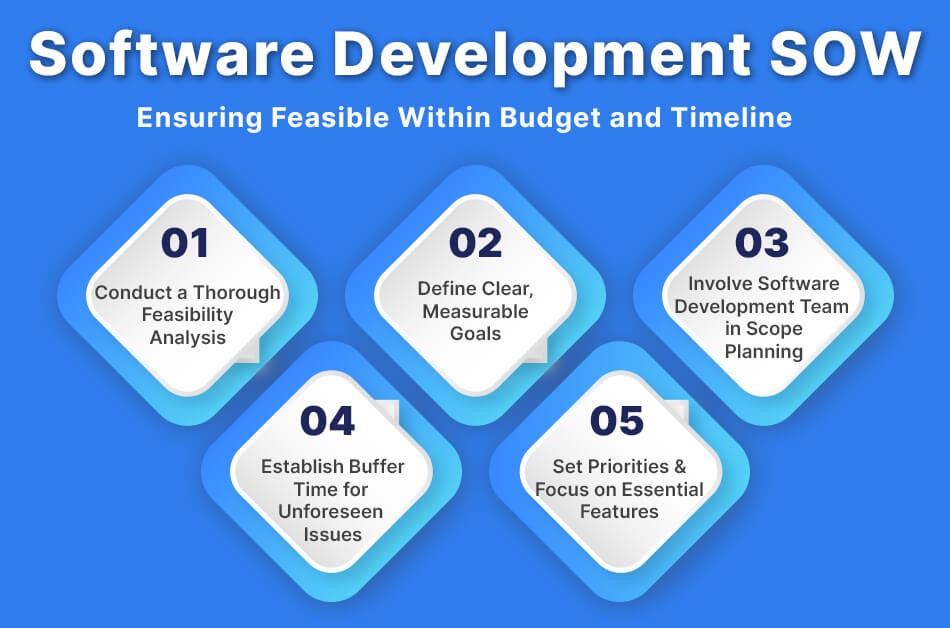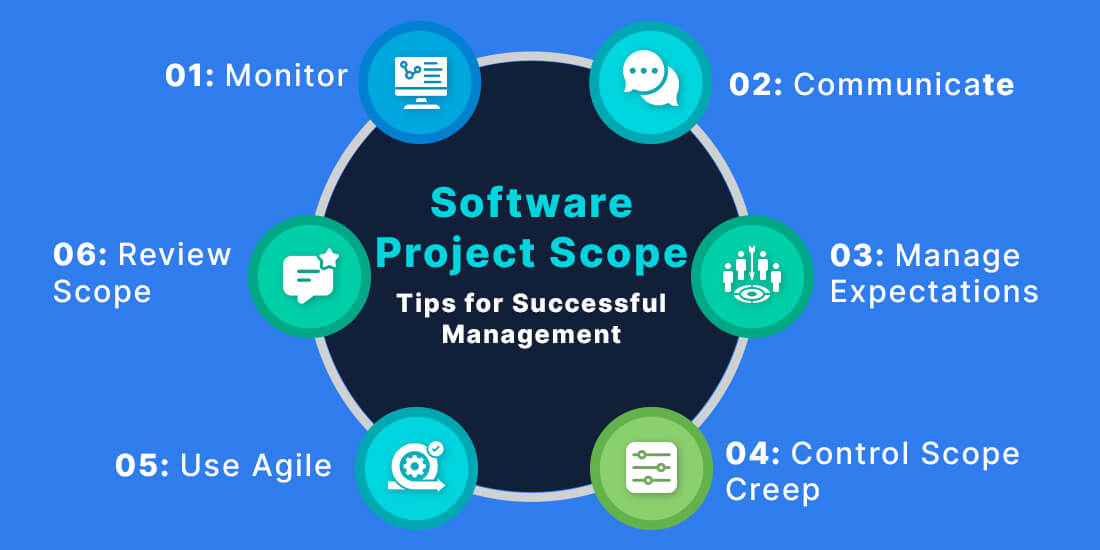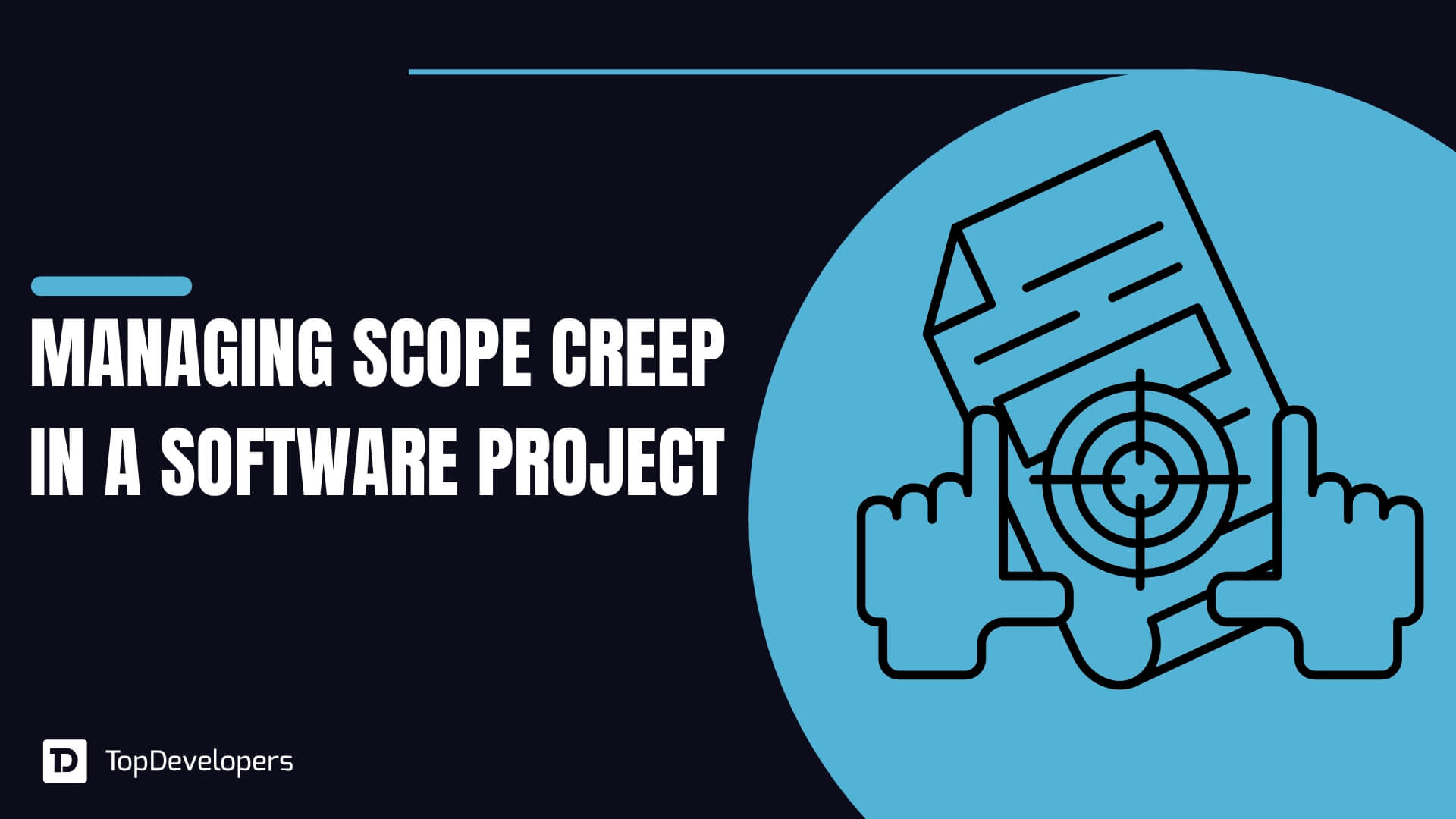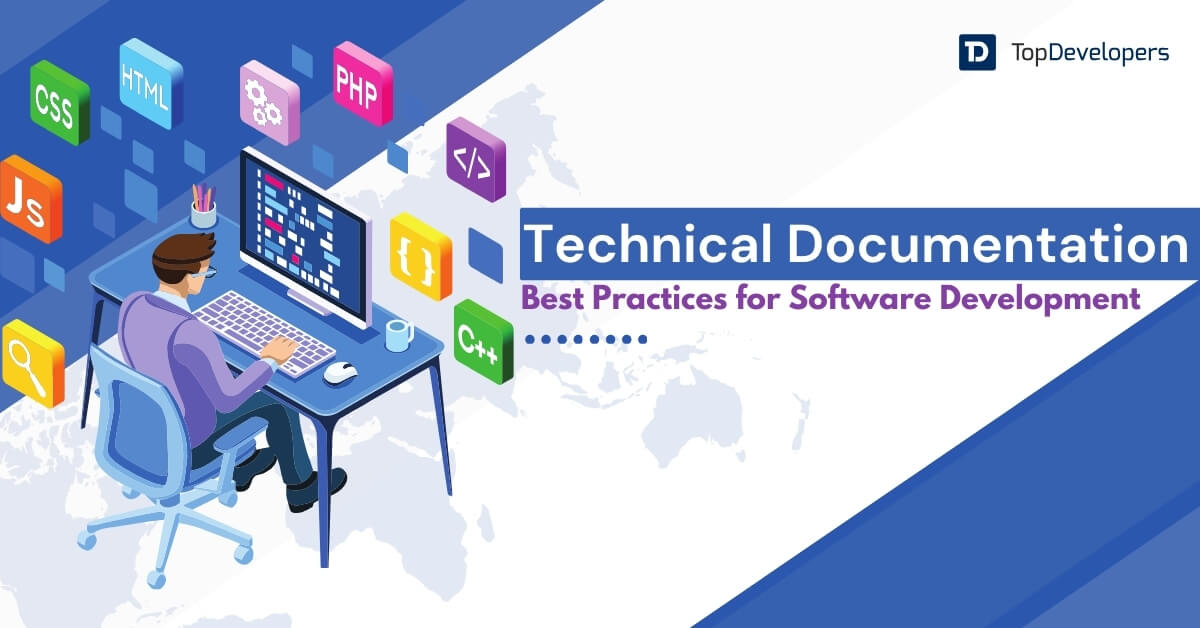
In today’s fast-paced software industry, establishing clear project guidelines from the start can be the difference between a successful product and a failed endeavor. A Software Development Scope of Work (SOW) is a critical document that provides structure and direction, aligning the expectations of both the client and the software development team. By clearly defining goals, deliverables, timelines, and responsibilities, an SOW minimizes misunderstandings and helps maintain the project’s focus.
The importance of an SOW becomes particularly clear when considering the high failure rate of software projects due to scope-related issues. A 2023 survey by the Project Management Institute found that 39% of software projects fail because of poor requirements management and insufficient scope definition. When done right, an SOW offers a roadmap that guides the project, keeping it on time, within budget, and aligned with the business’s objectives.
For instance, a leading e-commerce company recently managed to reduce its time-to-market by 20% by leveraging a detailed SOW. This document kept both the business and development teams aligned on deliverables and adaptable to changes, ultimately improving efficiency and customer satisfaction.
Table of Contents
- What is a Software Development Scope of Work (SOW)?
- Key Components of a Software Development Scope of Work (SOW)
- Why is a Scope of Work Crucial for Software Development Projects?
- How to Write an Effective Software Development SOW?
- Software Development Scope of Work Management Tips
- How Do You Ensure the Software Implementation Scope is Realistic and Feasible Within Budget and Timeline?
- How to Succeed at Software Development Project Scope Management?
- The Importance of a Well-Defined Software Development Scope of Work (SOW)
- Ready to Get Started?
- FAQs – Software Development Scope: Answers to Common Questions
- How to Write a Software Development SOW?
- What are the Risks of Not Having a Clear Scope of Work?
- How Can You Manage Scope Creep in Software Projects?
- What are Some Challenges in Managing the Scope of Work in Software development?
- Can the Software Development Project Scope Change Later On?
- What is an example of a Software Development Project Scope?
- What are the Key Components of an SOW of Software development?
- What is the Scope of Work in Software Development Projects?
- What are the Different Types of SOW Templates?
- What is the Difference Between a Software Development Statement of Work and Scope of Work?
What is a Software Development Scope of Work (SOW)?
A Software Development Scope of Work (SOW) is more than just a project outline; it’s a strategic document that defines every critical aspect of a software development project. Acting as a blueprint, the SOW provides a shared understanding between the client and the software development partner, detailing the project’s objectives, services to be delivered, and boundaries of the work involved.
By establishing a well-defined SOW, businesses set clear expectations from the beginning, helping to avoid scope creep, budget issues, and delays. This document acts as a contractual agreement that ensures both parties are aligned, allowing the software development process to proceed smoothly and successfully. With a solid SOW, companies can better manage resources, meet timelines, and focus on achieving the project’s goals.
Key Components of a Software Development Scope of Work (SOW)
To ensure clarity and accountability, a Software Development SOW typically includes several essential components. Each part/section serves a unique purpose in establishing the software project’s framework and setting realistic expectations:
Project Overview
A high-level summary of the project, including its primary objectives, business goals, and how the software will benefit the end-users.
Scope of Services
Defines the specific services provided by the software development team members, such as frontend and backend development, quality assurance, and system integrations. This section establishes the boundaries of the team’s responsibilities, ensuring a focused approach.
Deliverables
Outlines all expected outputs, from the Minimum Viable Product (MVP) to the final release, along with any prototypes or interim versions. Defining deliverables helps stakeholders track project progress effectively.
Project Timeline
Breaks the software product development project into different phases and sets milestones to guide the development process. This timeline keeps the project on track and helps identify potential delays early on.
Roles and Responsibilities
Clarifies the roles of each software development team member involved, such as developers, project managers, and quality assurance specialists. This transparency ensures everyone knows their tasks and whom to contact for specific needs.
Budget and Payment Terms
Provides a software development cost breakdown, including estimates, payment milestones, and financial terms. Having clear budgetary guidelines prevents surprises and promotes efficient resource management.
Assumptions and Dependencies
Lists any project assumptions, like necessary resources or external factors, and dependencies such as third-party tools or integrations. This section allows both end-users to anticipate and manage potential obstacles.
Change Management Process
Defines a formal process for handling scope changes, including how they will impact the timeline and budget. This process helps accommodate necessary adjustments without compromising the software development project’s stability.
Quality Standards and Testing
Specifies the benchmarks for software quality, including performance, security, and usability requirements. By detailing software testing procedures and acceptance criteria, this section ensures that the final product meets the required standards.
Termination and Review Process
Outlines terms for project termination and regular review sessions to assess progress. This proactive approach keeps both parties informed and ready to address any potential issues.
Why is a Scope of Work Crucial for Software Development Projects?
Creating a Software Development Scope of Work (SOW) is essential for setting a clear foundation for any project. The SOW ensures that both the business and the software development team have a shared understanding of the project’s objectives, deliverables, and limitations. Without a defined SOW, business organizations often face challenges such as scope creep, budget overages, and unmet deadlines—all of which can jeopardize the project’s success.
Preventing Scope Creep and Miscommunication
One of the greatest risks in software development is scope creep, where additional tasks and features begin to pile on, leading to delays and extra costs. An SOW serves as a contractually agreed-upon document that defines the boundaries of the software development scope. By documenting every aspect of the project, businesses can prevent unplanned changes that may disrupt the development process. For example, studies show that projects with a defined SOW experience 30% fewer delays due to scope adjustments.
Enhancing Accountability and Transparency
With a well-structured SOW, accountability is built into the software development from the start. Each team member, whether a software developer, project manager, or quality assurance tester, has a clear understanding of their role and responsibilities. This transparency reduces miscommunication and helps the software development company meet agreed-upon goals.
Aligning Budget and Timeline Expectations
Incorporating clear budget and payment terms in the Scope Of Work establishes a feasible financial plan for the software development. The SOW not only outlines estimated costs of software development but also defines payment milestones based on deliverables or project phases. This clarity allows both parties to manage resources efficiently, avoiding surprises and ensuring that the project remains financially feasible within the agreed timeline.
Ensuring Quality and Performance Standards
A detailed Software development SOW includes quality benchmarks and testing criteria that guide the software engineers and quality assurance team in producing a high-performing solution. These standards help guarantee that the software meets the client’s functional and technical requirements, reducing the risk of errors or rework after the launch or release of the software.
How to Write an Effective Software Development SOW?
Writing a Software Development Scope of Work (SOW) requires thoughtful planning and a clear understanding of the software’s goals and limitations. An effective SOW not only sets project expectations but also helps the software development service provider and client stay aligned throughout the software development life cycle (SDLC). Here are steps to draft and create a robust SOW for software development:
Collaborate with All Stakeholders
Involving all relevant parties, such as business leads, project managers, and software developers, from the start ensures that the SOW reflects everyone’s expectations and needs. This collaboration helps capture the software development project requirements accurately, reducing the chance of miscommunication down the line. When each stakeholder provides input, the final SOW is more likely to cover all perspectives, from technical needs to business goals.
Use Clear and Concise Language
The SOW should be accessible to both technical and non-technical audiences. Using simple, direct language makes the document easier to understand, allowing everyone involved to grasp the software development project’s scope without ambiguity. Avoid overly complex jargon, and aim for clarity, especially in sections like deliverables and quality standards.
Set Realistic Expectations
Be transparent about what can be realistically achieved within the budget and timeline. Clearly outline the scope of services, including the specific tasks and responsibilities of the software development team. Setting practical boundaries ensures that the software project development remains feasible and reduces the risk of scope creep. Realistic expectations create a balanced relationship between the client and the software development team, promoting a positive working environment.
Document Requirements in Detail
Provide detailed descriptions of each project deliverable, from prototypes to final outputs. This section should answer questions about the product’s functionality, design specifications, and performance requirements. By documenting these details upfront, you establish a clear roadmap for the hired software development company, which helps prevent costly revisions and misunderstandings later in the project.
Incorporate Feedback Loops
Establishing regular feedback loops throughout the software development timeline is essential for maintaining alignment between stakeholders. These checkpoints enable both the client and the software development agency to review progress, address any concerns, and make adjustments if needed. Scheduling periodic reviews helps ensure that the project stays on track, meeting quality and timeline standards.
Define Change Management Procedures
Changes are inevitable in software development, but managing them effectively is crucial. Outline a formal change management process in the SOW, specifying how any modifications to the scope, budget, or timeline should be handled. This includes obtaining approvals, documenting the changes, and evaluating their impact on the software development plan. A clear change management process ensures that the project remains flexible without compromising the initial software development agreement.
Software Development Scope of Work Management Tips
Effectively managing the Software Development Scope of Work (SOW) is just as critical as drafting it. Once the SOW is established, careful oversight is essential to keep the project aligned with its objectives. Here are practical tips to ensure that your SOW remains a guiding document throughout the software development life cycle, helping to keep the software development team focused and the client informed.
Maintain Consistent Communication
Regular communication is key to managing the project scope effectively. Schedule consistent meetings with the software development team, project managers, and stakeholders to discuss project progress, challenges, and any required adjustments. Transparent and frequent updates help address concerns early, ensuring everyone is aligned and informed.
Track Milestones and Deliverables
Using a project management tool to track milestones and deliverables is essential for scope management. Set clear deadlines and monitor each software development phase’s progress to avoid delays. By keeping the project timeline on track, both the client and development team can ensure that the software project adheres to its intended scope.
Document All Changes
Scope adjustments are inevitable, but maintaining a clear record of changes is crucial for scope management. Document any modifications to the SOW, including the reason for the change, its impact on the timeline and budget, and approval from all relevant parties. This documentation helps prevent misunderstandings and ensures that the process of software development remains transparent and organized.
Implement a Formal Change Management Process
Having a defined process for managing scope changes allows for smooth transitions when adjustments are needed. Whether the client requests new features or the software development team member identifies necessary improvements, a structured change management process ensures that modifications are approved, documented, and evaluated for impact on the software development budget and timeline.
Review and Adjust Quality Standards as Needed
Quality standards and testing benchmarks should be reviewed periodically to ensure they align with project goals and technical requirements. Regularly revisiting these standards helps the software developers maintain a high-quality output, ensuring that each deliverable meets the agreed-upon criteria.
Prepare for Regular SOW Reviews
Plan periodic software development SOW review sessions to assess the project’s alignment with its initial scope. These reviews provide an opportunity to reflect on completed work, address any deviations from the original software development plan, and make necessary adjustments. Regular SOW reviews foster a proactive approach to scope management, enabling the team to anticipate and respond to potential challenges effectively.
How Do You Ensure the Software Implementation Scope is Realistic and Feasible Within Budget and Timeline?
Establishing a realistic and feasible software implementation scope is essential for delivering a project that meets expectations without exceeding the agreed budget or timeline. Achieving this requires careful requirement analysis, planning, resource assessment, and close collaboration with the software development team. Here are strategies to ensure your software project scope aligns with both budgetary and time constraints:
Conduct a Thorough Feasibility Analysis
Before finalizing the SOW, perform a feasibility study to evaluate if the proposed scope can realistically be completed within the allotted budget and timeframe. Consider any technical complexities, resource requirements, and potential risks that may impact project execution. A feasibility analysis provides clarity on whether the software development project goals are achievable and highlights areas where adjustments might be necessary.
Define Clear, Measurable Goals
Break down the software project into well-defined, measurable goals. By setting specific milestones, such as the completion of individual features or software development phases, you create a structure that helps the software company to stay on track. Clear goals enable both the client and the software development team to assess progress accurately, ensuring that each milestone aligns with budget and timeline expectations.
Involve the Software Development Team in Scope Planning
Consult with software engineers and project managers during the planning stage to gain insights into the technical requirements and estimated timelines. The software product development team’s expertise can provide valuable input, helping to set realistic boundaries for the project’s scope. By including the development team in scope planning, you reduce the risk of unexpected technical challenges that may cause delays or budget increases.
Establish Buffer Time for Unforeseen Issues
Even with a well-defined scope, unforeseen issues can arise during software development. Build buffer time into the project timeline to accommodate any potential challenges, such as delays in third-party integrations or adjustments to meet changing business needs. Buffer time provides a safety net that can prevent minor setbacks from affecting the overall software development timeline.
Set Priorities and Focus on Essential Features
To keep the project feasible, prioritize features and focus on delivering core functionalities first. Identify which elements are critical to the software’s primary goals and which can be added in future phases. This prioritization ensures that resources are allocated to the most important features, maximizing value within the budget and timeline constraints.
How to Succeed at Software Development Project Scope Management?
Effective scope management is essential for the success of any software development project. Managing the project scope requires not only a clear Scope of Work but also ongoing effort to monitor, adjust, and ensure alignment throughout the software product development life cycle. Here are practical strategies for successful software development scope management:
Regularly Monitor Scope Alignment
Continuous monitoring helps ensure that the project remains aligned with its initial goals and expectations. Use project management tools to track progress and evaluate whether each phase adheres to the defined scope. Monitoring provides insights into whether adjustments are needed and helps prevent deviations that could lead to scope creep.
Prioritize Effective Communication
Transparent and frequent communication with the software development team and stakeholders is crucial for managing the project scope. Schedule regular check-ins to discuss project milestones, review progress, and address any concerns promptly. Effective communication helps all parties stay aligned, fostering a proactive approach to scope management.
Manage Stakeholder Expectations
Establishing realistic expectations with stakeholders from the beginning ensures that everyone understands the project’s limitations and objectives. Provide regular updates on software development project status and communicate any necessary changes clearly. Managing expectations reduces the risk of misunderstandings and helps stakeholders make informed decisions.
Define and Control Scope Creep
Scope creep is one of the most common challenges in software development projects. To manage it effectively, define a structured change management process that includes steps for requesting, reviewing, and approving scope changes. By controlling scope creep, you keep the project focused and prevent additional costs or delays.
Use Agile Methodologies for Flexibility
Implementing software development process methodologies, such as iterative development and regular sprints, allows for greater flexibility in software projects. Agile methods enable software developers to make incremental progress, adapt to feedback, and incorporate minor adjustments without affecting the overall scope. Agile practices ensure that the project remains on track while accommodating necessary improvements.
Conduct Regular Scope Reviews
Scheduling periodic scope reviews helps assess whether the development of software is on course and aligned with the original SOW. These reviews allow the team to evaluate completed milestones, address any deviations from the planned scope, and make adjustments if necessary. Regular scope reviews foster accountability and keep the project moving forward smoothly.
The Importance of a Well-Defined Software Development Scope of Work (SOW)
A Software Development Scope of Work (SOW) is much more than a simple project outline. It’s a strategic document that provides the foundation for a successful partnership between the client and the software development team. By clearly defining project goals, deliverables, timelines, roles, and budget expectations, a well-crafted SOW minimizes risks, reduces misunderstandings, and keeps the project on track.
The value of a Scope of Work is particularly evident when it comes to managing scope creep and maintaining alignment. With clear boundaries and a structured change management process, the software development SOW ensures that the project remains focused, even when adjustments are needed. This structured approach fosters transparency and accountability, creating a strong framework for collaboration.
For businesses seeking a reliable software development company, an SOW offers peace of mind, allowing them to set realistic goals, manage resources effectively, and adapt to changes without compromising the project’s integrity. Whether you’re working with a new software development team or an established partner, investing time in a detailed software development Scope of Work is one of the most effective ways to set your project up for success.
Ready to Get Started?
If you’re looking for expert assistance in crafting a comprehensive Software Development SOW, TopDevelopers.co can connect you with top-rated software development companies that specialize in creating structured, results-driven project plans. Start your journey with a solid foundation by partnering with professionals who understand the value of a clear, detailed SOW.
FAQs – Software Development Scope: Answers to Common Questions
To help you navigate the complexities of a Software Development Scope of Work (SOW), we’ve answered some of the most frequently asked questions. These insights will provide clarity on creating, managing, and adapting an SOW for successful software projects.
How to Write a Software Development SOW?
Creating an SOW for software development starts with defining the project’s objectives and scope. Include essential sections like project overview, scope of services, deliverables, timeline, budget, and quality standards. Collaborate with stakeholders, keep language clear, and set realistic expectations to ensure the document is comprehensive and actionable.
What are the Risks of Not Having a Clear Scope of Work?
Without a well-defined scope, projects are more likely to experience scope creep, budget overruns, and misaligned expectations. A clear software development Scope of Work minimizes these risks by providing a detailed roadmap, ensuring that both the client and software development company are aligned on project goals and responsibilities.
How Can You Manage Scope Creep in Software Projects?
To control scope creep, implement a change management process within your SOW. Document each change request, assess its impact on budget and timeline, and obtain necessary approvals. Regular reviews and clear communication also help prevent unplanned scope changes.
What are Some Challenges in Managing the Scope of Work in Software development?
Common challenges include unclear requirements, evolving project goals, and managing stakeholder expectations. Regular updates, well-defined project boundaries, and consistent communication with all team members and stakeholders can help mitigate these issues.
Can the Software Development Project Scope Change Later On?
Yes, changes can occur, but they should be managed carefully to avoid impacting project timelines and budget. Include a formal change management process in your SOW that outlines how changes are requested, reviewed, and approved to maintain control over scope adjustments.
What is an example of a Software Development Project Scope?
A typical software project scope might include objectives like developing an MVP, delivering specific features (e.g., user authentication, payment integration), and completing QA testing. The scope details each deliverable, timeline, and milestone to guide the progress of software creation.
What are the Key Components of an SOW of Software development?
The main components of a software development SOW include the project overview, scope of services, deliverables, project timeline, roles and responsibilities, budget, quality standards, assumptions, dependencies, and a change management process. Each component plays a vital role in providing a comprehensive structure to build a software.
What is the Scope of Work in Software Development Projects?
The scope of work defines what is included in the project, such as specific services, deliverables, and goals, as well as any limitations. It sets clear expectations for both the client and software development partner, outlining the agreed-upon terms and responsibilities.
What are the Different Types of SOW Templates?
There are several types of SOW templates, including time and materials, fixed-price, and deliverable-based SOWs. Each template serves different project requirements based on the budget structure, deliverables, and the nature of the client-developer agreement.
What is the Difference Between a Software Development Statement of Work and Scope of Work?
The Statement of Work (SOW) is a comprehensive document detailing all aspects of the project, including scope, deliverables, budget, and timeline. The Scope of Work, on the other hand, specifically defines what is and isn’t included in the project’s scope. Essentially, the Scope of Work is a part of the overall SOW.
 Avantika Shergil
| Nov 8, 2024
Avantika Shergil
| Nov 8, 2024
Avantika Shergil is a technology enthusiast and thought leader with deep expertise in software development and web technologies. With over 8 years of experience analyzing and evaluating cutting-edge digital solutions, Avantika has a knack for demystifying complex tech trends. Her insights into modern programming frameworks, system architecture, and web innovation have empowered businesses to make informed decisions in the ever-evolving tech landscape. Avantika is passionate about bridging the gap between technology and business strategy, helping businesses build customized software and website, and understand about different tools to leverage effectively for their ventures. Explore her work for a unique perspective on the future of digital innovation.
